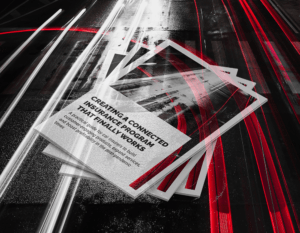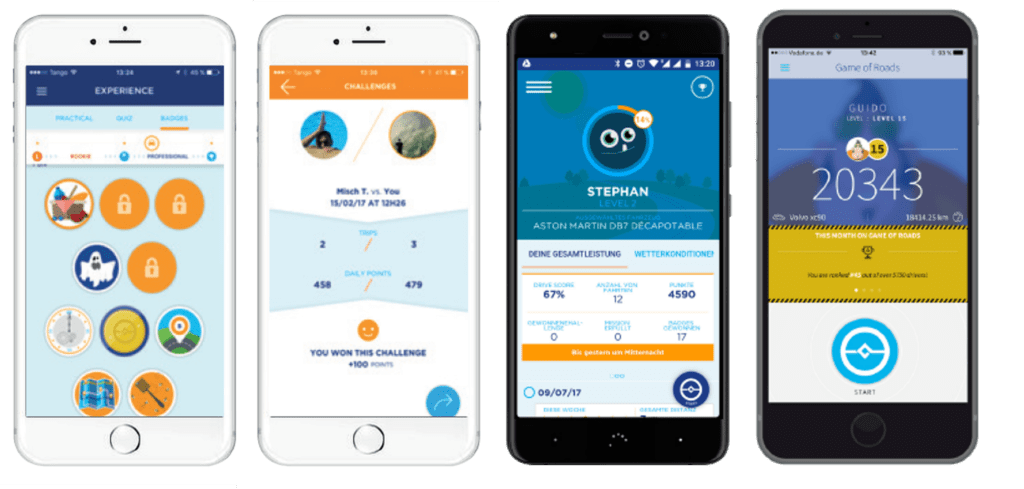
Creating a Connected Insurance Program That Finally Works
A practical guide for car insurers to build customer-engaging products, expand services, and boost profitability in the post-pandemic times.
… Read More
Amid the accelerating economic recovery, the competition in the motor insurance market is intensifying. To make up for the losses sustained during the pandemic, insurers are unlikely to cut down premiums to incentivize customers. Instead, they will look for other methods to attract and keep them. But how to put new life into the hackneyed world of bonus rewards and privilege points? You’ll find some ideas in this article.
The competition between motor insurance companies is ever-increasing, but in 2022, it’s expected to be more fierce than normal. While insurers anticipate higher demand for their products as more drivers take to the roads, they also plan on significant price rises. In the USA, the average car insurance cost this year will likely increase by 5%, the steepest growth in a few years. British companies already hiked prices in Q4 of 2021, with some reporting rises at the level of 7%.
At the same time, customers are expecting more from their insurance companies. In the uncertainty of the post-pandemic world, they are likely to appreciate tailored, flexible insurance options more than ever before. And with the pandemic shaking things up lately, what is one thing insurance companies can do to help draw in new customers and retain existing ones? Build a quality rewards program!
The pandemic has changed things for car insurance companies.
Source: 2022 insurance industry outlook, Deloitte
Loyalty rewards might seem straightforward, but the insurance company’s responsibility is to make them truly engaging and not a gimmick. As a two-time world’s heavyweight champion and Olympic gold medalist boxer, George Foreman once said, “If something is worth doing, it is worth doing right. I take that one step further. You shouldn’t do anything unless you do it right.” In the same way, points programs that don’t work properly or seem dodgy may do more harm than good. You don’t want customers looking at you thinking: ‘I must be paying them too much if they are wasting money on pens and umbrellas.’ That thought will make them immediately head to your competitors.
The good news is that some exciting options have emerged that can help you develop an exclusive rewards program that goes beyond the trite ‘just go all year without a claim’ proposal. For example, modern telematics opens the way for sophisticated, personalized driver profiling that reflects the unique behavior of each driver in various situations. The solution assigns a relevant score based on the post-trip readings that account for contextual information like weather, traffic, or road conditions.
This approach is innovative because traditional solutions used to inform car insurance rewards have neglected much of the trip context, focusing on some general notion of ‘safe driving.’ So, for example, they’d almost always consider driving at the speed limit as proper driving, rewarding it in the same way, no matter if the trip occurred on a dry, empty highway on a bright summer day or a slime mud road in the middle of a winter storm. So in no way can we speak of a personalized and fair approach. And losing customers because of their frustration with such inaccuracies is a frequent problem.
Meanwhile, a better, data-oriented system offering detailed risk-scoring of trips makes better loyalty programs that use transparent rules and pure data to consider individual driving skills and not just crash avoidance. You can enhance them with add-ons, like trip logbooks, to allow customers to keep track of all past trips and understand how good they have been driving in terms of risk, eco-efficiency, and car wear. Many drivers will already appreciate the opportunity to get this information, as it will help them keep safe and reduce spending on fuel and maintenance. And when you tie this with attractive rewards, your customers will never go away.
You already know that detailed, contextual knowledge of your customers and their driving style is essential to power highly-personalized rewards systems. But how can you best recognize drivers’ skills and safe driving? There are many ways to do that and differentiate your business from others.
Simple as they are, badges truly give people a sense of pride in themselves. In addition, they positively reinforce good behaviors and endorse driver accomplishments. Using them can also help inspire drivers to compete with each other. Which, in turn, encourages others to join in on the fun. But remember, a badge cannot be the main reward! However, it adds a nice, personal touch to other gifts.
Launching specific challenges can give a motto to your rewards program. The theme and the rules of these challenges are up to you, but we have a few suggestions. You can start a green driving week, rewarding customers who improve their driving style to achieve a 20% reduction in emissions. Or challenge the drivers not to touch their phones while on the road. You can also launch a no overspeeding challenge. Think of these challenges as a means to breaking bad driving habits in a more targeted, and fun way. Then, incorporate your rewards program into your Corporate Social Responsibility (CSR) activities and win twice.
A rewards program doesn’t need to be boring and only includes capturing points. With the right tools, you can do better than that. Gamification will help you maximize customers’ engagement, encourage regular interactions, and improve their driving skills. Just see below how Bâloise Assurances pulled it off.
It’s a simple fact: bad drivers are at risk of more frequent and severe accidents. Not being able to identify bad drivers before an incident occurs reduces the competitiveness of the insurance product and entails losses. Bâloise Assurances challenged this fact, being the first insurer in Luxembourg to combine prevention, insurance, and entertainment to delight its customers and offer them a unique experience.
Bâloise was keen to bring safe driving and road safety back into daily discussions and coach drivers in a fun and educative way. So in 2015, the company launched Game of Roads, a revolutionary new application for the Luxembourg market, aimed at all those who want to improve their driving while having fun and challenging their friends. The mobile app was developed by Motion-S, building on accurate data collection and risk assessment methodology. A follow-up focusing on safe-driving coaching launched in 2016.
In continuation of Game of Roads, Bâloise launched in 2017 with Motion-S, the first telematics mobile application granting up to 30% discount on the insurance premium. GoodDrive evaluated driving styles and encouraged young drivers to drive safely while converting them into customers. Drivers who adopted considerate and safe driving styles received a proportional premium discount.

Screenshots of Game of Roads and GoodDrive mobile apps.
Reward points can be redeemed as an in-game currency or used to purchase products and get discounts. To that end, consider teaming up with major retailers to offer safe drivers gift cards or entry to events (like this Australian insurer did).
Your customers could also use the points to purchase a ticket to a cinema or get a discount coupon for a buy one, get one free food offer. Other rewards include rental- and garage-related discounts, travel vouchers, and technology-related discounts. A partner program can also feature discounts on insurance products as rewards (e.g., on policy renewal, deductible, or other insurance products).
Trust us; if someone saves money on date night or gets a free weekend in a spa just by driving safely, they will appreciate your company much more. Besides, the possibility of conversations presenting your business in a positive light will radically increase.
However, when developing your partnership program, remember that you have to provide a strong incentive to make people join it. That’s why the choice of trusted, recognized partners is critical. And for the existing programs, periodically evaluate your partners and analyze what value they bring to the table. Also, remember that there are two sides to every partnership, so you also must offer incentives that the other party will appreciate.
In some areas, driver’s education is not very good, and to get a driver’s license doesn’t take much skill. So the ability to coach drivers in skills they never had the chance to learn can be invaluable. Whether someone has been driving for days or years, teaching and refreshers are never bad. And with modern telematics, designing a program using training as a reward is easy as a breeze.
Let’s say that a driver is regularly struggling to get a high safety score in a particular category (e.g., on slippery roads or in the evenings). In that case, a mobile app can explain what the main risky behaviors are and provide coaching tips, that can even include suggesting a video that demonstrates the proper driving technique for that score. For example, explaining why using the brakes gradually is better than hard puts less wear on a vehicle and reduces the risk of an accident.
When preparing the coaching materials, cover the root causes for continually driving a particular way: distracted driving, anticipation, awareness of the other vehicles on the road, or general lack of proper driving techniques. Teaching safer drivers can save lives, which is a great thing. But if your company can do it, all while saving money on claims simultaneously, it is even better.
Key takeaway: Even though the strategy of rewarding customers is well-known, it can still be extremely effective. Rewards fuel customer motivation and encourage drivers to behave in a way they might not have done otherwise. When done right, implementing a rewards system can help customers feel good about themselves and reinforce a positive view of your company. But to make your incentives impactful, you first need to find out as much as possible about each driver. Fortunately, there are tools for that to let you start right away!

A practical guide for car insurers to build customer-engaging products, expand services, and boost profitability in the post-pandemic times.
… Read More

Picture this. You’re driving back home after a long day of hard work. Exhausted from a series of back-to-back calls, starving despite that quick, half-eaten sandwich you rushed through between one virtual meeting and another. Dying to finally get well-deserved rest.
But just then, a sharp squeal comes from under the hood. Is it an issue with brakes or a loose or worn fan belt? Maybe the steering system went down?
Either way, your dreams of a good evening’s rest are now ruined, and you’re up for towing or an unplanned inspection. Both of which are going to cost you dearly.
Now, what if all of that time and hassle could have been avoided?
… Read More

Recently, we discussed the differences and similarities between data analytics and data science. Today, we’re going to investigate the first one in more detail, focusing on its use in the context of mobility. Who uses data analytics solutions, what are the core use cases, and what aspects to consider when applying analytics to mobility? Check out this introduction to our 3-part series on data analytics SaaS. … Read More

Are you ready for a new era of device-free, data-driven Fleet Solutions?
Watch our free webinar to look at the future of #fleetOptimization powered by Connected Car Data. Together with our partner High Mobility, we’ll be looking at the new possibilities that open up thanks to Connected Car Data and how these can empower innovation across the fleet industry. We’ll cover: “What use cases do OEM-connected car data platforms enable?”, “What are its current limitations, and how to tackle them?”, “What to expect of the midterm future?”, and “How connected car data can be leveraged to innovate in the fleet industry?”, among others. Register now and join the discussion.
… Read More

“Information is the oil of the 21st century, and analytics is the combustion engine.”
These simple words, spoken by Peter Sondergaard, the former executive vice president and member of Gartner’s operating committee, perfectly illustrate the significance of data and its processing in the contemporary world. In this article, we will investigate how it impacts the automotive industry in particular and elucidate the difference between data science and data analytics to settle it once and for all.
… Read More

Picture yourself in 19th-century Britain. You’re doomed to the ordeal of commuting in a horse-drawn-wheeled carriage, accompanied by a dozen of sweaty co-passengers whose heads bob religiously to the rhythm of the road bumps and cracks.
Then, one day, rail reaches your town, allowing you to venture out hundreds of miles away in an amazingly short time. The steam locomotive’s design is revolutionary, making the impossible real and massively enhancing travel comfort. This innovation feels like a breakthrough in the history of mobility, not only for you. … Read More
| Cookie | Duration | Description |
|---|---|---|
| cookielawinfo-checkbox-analytics | 11 months | This cookie is set by GDPR Cookie Consent plugin. The cookie is used to store the user consent for the cookies in the category "Analytics". |
| cookielawinfo-checkbox-functional | 11 months | The cookie is set by GDPR cookie consent to record the user consent for the cookies in the category "Functional". |
| cookielawinfo-checkbox-necessary | 11 months | This cookie is set by GDPR Cookie Consent plugin. The cookies is used to store the user consent for the cookies in the category "Necessary". |
| cookielawinfo-checkbox-others | 11 months | This cookie is set by GDPR Cookie Consent plugin. The cookie is used to store the user consent for the cookies in the category "Other. |
| cookielawinfo-checkbox-performance | 11 months | This cookie is set by GDPR Cookie Consent plugin. The cookie is used to store the user consent for the cookies in the category "Performance". |
| viewed_cookie_policy | 11 months | The cookie is set by the GDPR Cookie Consent plugin and is used to store whether or not user has consented to the use of cookies. It does not store any personal data. |
Test drive our API Suite for 30 days!
Tell us a bit about yourself, and we’ll get in touch with you in no time.